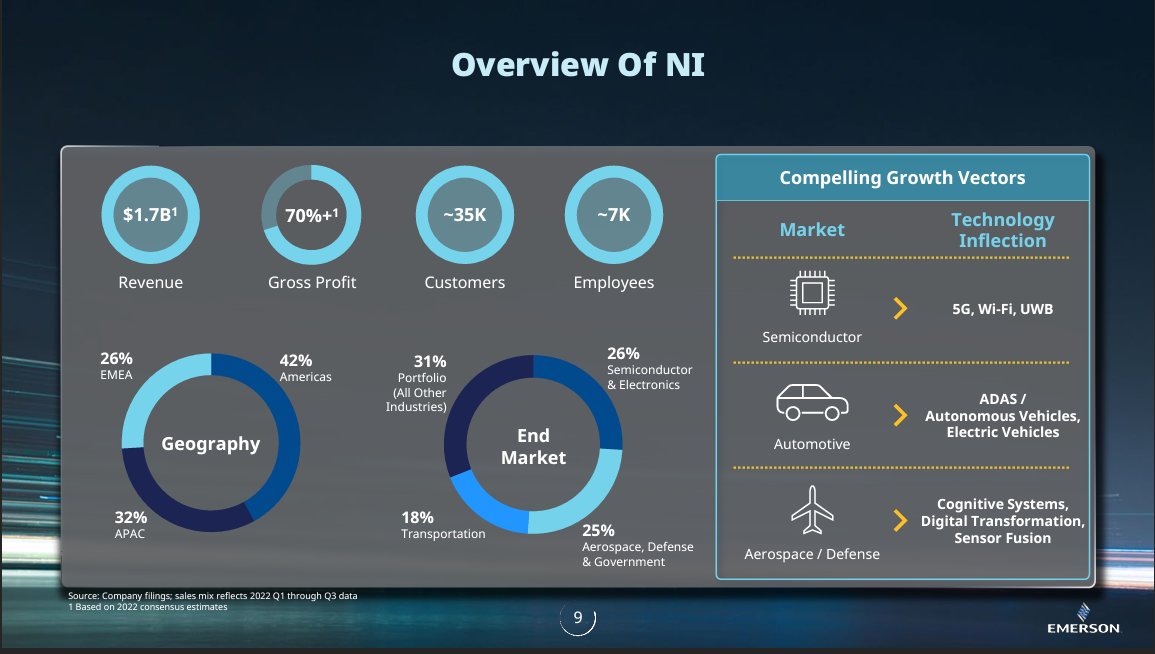M&A always gets buzz in the public markets
But, many investors don't understand what a deal means for them as a shareholder
Also, most can't be bothered reading thousands of pages of underlying documentation (or just get it very wrong)
Here are the SEC filings to dig into🧵
But, many investors don't understand what a deal means for them as a shareholder
Also, most can't be bothered reading thousands of pages of underlying documentation (or just get it very wrong)
Here are the SEC filings to dig into🧵
⏳At Announcement ("T+0")
8-K & 425
✅Press Release
✅Investor Presentation
✅Transaction Docs
Takeaways:
🤔Focus on "how it works" (rationale + mechanics)
🤔Ask yourself: "what do I get or give here?"
Example: how the $10bn $ADBE stock part of Figma deal *technically* works


8-K & 425
✅Press Release
✅Investor Presentation
✅Transaction Docs
Takeaways:
🤔Focus on "how it works" (rationale + mechanics)
🤔Ask yourself: "what do I get or give here?"
Example: how the $10bn $ADBE stock part of Figma deal *technically* works



Takeaway #2: "Read Between the Lines"
🤔Stop and ask "why did they do this?"
🤔Stop and ask "where's the risk?"
Examples (all co-dependent variables)
1⃣Deal Closing (i.e. why close on X date)
2⃣Termination (i.e. who's at risk of not closing)
3⃣Others (i.e. "go shop" in PE deals)


🤔Stop and ask "why did they do this?"
🤔Stop and ask "where's the risk?"
Examples (all co-dependent variables)
1⃣Deal Closing (i.e. why close on X date)
2⃣Termination (i.e. who's at risk of not closing)
3⃣Others (i.e. "go shop" in PE deals)



⏳After Announcement, Prior to Closing (T+30)
PREM14A / 14D-9
1⃣Background of the Merger
2⃣Reasons for the Merger
3⃣Certain Financial Forecasts
4⃣Opinion of Company's Advisor
"80/20" rule here but activists read everything (prior to teeing up their PREC14As)
#1-4 deep dive...
PREM14A / 14D-9
1⃣Background of the Merger
2⃣Reasons for the Merger
3⃣Certain Financial Forecasts
4⃣Opinion of Company's Advisor
"80/20" rule here but activists read everything (prior to teeing up their PREC14As)
#1-4 deep dive...
1⃣Background of the Merger
TLDR: "narrative of record" for events & circumstances leading up to signing
Key Learnings:
✅See # of buyers & interactions (anonymized)
✅See how negotiations "played" over time
✅Give you comfort on "bona fide" process
TLDR: "narrative of record" for events & circumstances leading up to signing
Key Learnings:
✅See # of buyers & interactions (anonymized)
✅See how negotiations "played" over time
✅Give you comfort on "bona fide" process
https://twitter.com/GlogauGordon/status/1602307309132079104
2⃣Reasons for the Merger
This is the non-exhaustive list of factors the Board considered in approving the merger
Usual Reasons:
✅Attractive offer premium
✅"Standalone" execution risk (common today)
✅Certainty of closing the deal
✅Tax treatment, regulatory / litigation risk
This is the non-exhaustive list of factors the Board considered in approving the merger
Usual Reasons:
✅Attractive offer premium
✅"Standalone" execution risk (common today)
✅Certainty of closing the deal
✅Tax treatment, regulatory / litigation risk
3⃣Certain Financial Forecasts
These are the Board-approved "business case" projections buyers in the M&A process saw
Serves as the the basis of evaluation of the financial merits and "fairness" of the offer (covered in the the next🧵)
(e.g. $COUP attached here from PREM14A)
These are the Board-approved "business case" projections buyers in the M&A process saw
Serves as the the basis of evaluation of the financial merits and "fairness" of the offer (covered in the the next🧵)
(e.g. $COUP attached here from PREM14A)

4⃣Opinion of Company's Advisor
This is the bank's work evaluating the financial "fairness" of the offer:
E.g. $COUP "Football Field" for offer @ $81.00
1⃣DCF: $40.30 - $79.42
2⃣Comps: 27.70 - $64.54
3⃣Precedents: $47.07 - $92.83
"Litigation" Rule of Thumb: Offer > DCF = "👍"



This is the bank's work evaluating the financial "fairness" of the offer:
E.g. $COUP "Football Field" for offer @ $81.00
1⃣DCF: $40.30 - $79.42
2⃣Comps: 27.70 - $64.54
3⃣Precedents: $47.07 - $92.83
"Litigation" Rule of Thumb: Offer > DCF = "👍"




⌛️After Announcement, Prior to Closing (T+?)
PREC14A (along with DEF14As)
😠Sometimes you get a "contested situation"
Typical Reasons Cited:
⁉️ Value destructive
⁉️ Timing is wrong
⁉️ Bad M&A process
Examples:
$AVLR (deal went through)
$ZEN / $MNTV (worked, deal cancelled)



PREC14A (along with DEF14As)
😠Sometimes you get a "contested situation"
Typical Reasons Cited:
⁉️ Value destructive
⁉️ Timing is wrong
⁉️ Bad M&A process
Examples:
$AVLR (deal went through)
$ZEN / $MNTV (worked, deal cancelled)




TLDR on "M&A":
🕵️Read announcement docs
🔭Keep an eye out for the proxy
🤔Think about merits & risks, always
💡Inspired by "Tear Downs" authors below (w/ esoteric flair)😉
@BrianFeroldi, @10kdiver, @cjgustafson222, @BreakingSaaS, @NonGaap, @QCompounding, @WOLF_Financial
🕵️Read announcement docs
🔭Keep an eye out for the proxy
🤔Think about merits & risks, always
💡Inspired by "Tear Downs" authors below (w/ esoteric flair)😉
@BrianFeroldi, @10kdiver, @cjgustafson222, @BreakingSaaS, @NonGaap, @QCompounding, @WOLF_Financial
Soon enough you can all be merger arb gurus like @compound248 & @akramsrazor!
Follow me at @GlogauGordon & you enjoy some steam of consciousness on #mergersandacquisitions, #SaaS and other topics
RT, like, spread the word (first tweet below) 🙏
Follow me at @GlogauGordon & you enjoy some steam of consciousness on #mergersandacquisitions, #SaaS and other topics
RT, like, spread the word (first tweet below) 🙏
https://twitter.com/GlogauGordon/status/1614046406825881600
• • •
Missing some Tweet in this thread? You can try to
force a refresh














